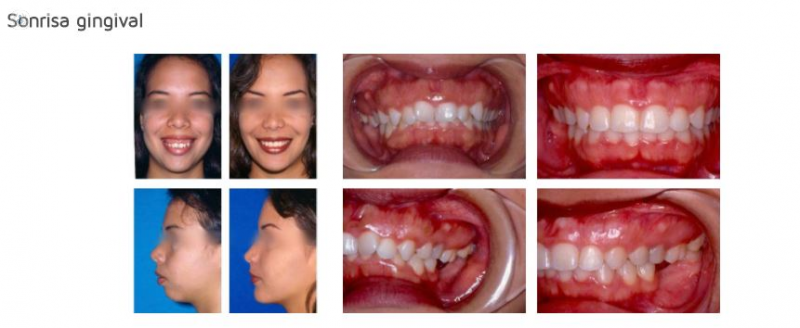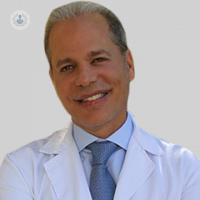Orthodontics and orthognathic surgery to correct dentofacial alterations
Written by:Orthognathic surgery (a term that comes from the Greek orthos (right) and gnathos (mandible)) aims to move the teeth and bones to a more adequate, more esthetic, more functional and, of course, healthier position. This is achieved through the combination of two areas or medical-dental specialties: orthodontics and maxillofacial surgery.
Orthodontics moves the teeth and maxillofacial surgery the bones. Dentofacial deformities are very frequent; Between 8 and 12% of the world population has some type of imbalance related to the teeth. We speak of patients who have an improper bite (malocclusion), or those in which the bones are in an incorrect position.
Malocusion
A malocclusion is any degree of inappropriate contact between the teeth of the upper jaw with those of the lower jaw or mandible. Thus, malocclusion can lead to problems with the bite, gingival tissue, mandibular joint, phonation and aesthetics.
Dentofacial alterations
- Difficulty chewing, biting or swallowing
- Difficulty speaking or pronouncing certain words
- Pain or sounds in the TMJ
- Muscle pain or changes in neck and / or face
- Psychological alterations
- Difficulty breathing
- Earache
- Snoring or sleep disorders
How to correct dentofacial alterations with orthodontics
Orthodontics is the specialty of dentistry that is responsible for the diagnosis and correction of bad position of the teeth, achieving alignment and placement in correct positions, improving bite, masticatory function and facial aesthetics. If the inadequate position of the teeth is added to the poor development of the mandibular and / or maxillary bones, it is necessary to combine this orthodontic with corrective surgery or orthognathic surgery.
During childhood, certain malocclusions or dentofacial disharmony can be treated simply by orthodontics and the forces of growth, but in adulthood this possibility does not exist.
Orthodontics can correct problems in the bite when it affects only the teeth, while orthognathic surgery is necessary when there is a skeletal imbalance of the maxillary or mandibular bones.
How to correct dentofacial alterations with orthognathic surgery
Orthognathic surgery is performed in order to place the bones in their proper position after an initial or pre-surgical orthodontic treatment. Its main objective is to achieve a proper bite, restore the masticatory function and improve facial aesthetics.
Why should I resort to orthognathic surgery?
There are several reasons why these dentofacial disharmonies should be corrected:
- When the orthodontic treatment can not correct the problem by itself.
- When dental malposition is associated with cosmetic problems or moderate or severe alterations. These disharmonies have great influence on facial aesthetics, so one of the main benefits is to improve the appearance.
- Improving the masticatory function will not only be able to chew better, but avoid occlusal imbalances or dental overloads, which result in pain, loss of teeth ...
- Sometimes orthodontics alone achieves good results, although sometimes they have to be corrected with surgery.
- To reduce orthodontic time. Mobilizing the bones to a better position facilitates orthodontics and decreases treatment time.
- Favorable aesthetic changes, since the patient's facial aesthetics are improved through surgery.
- Improvements in breathing
- Improvements in speech
- Improve and possibly prevent disarray in the ATM.
What are the most frequent dentofacial alterations?
- Large jaw: The person has a large jaw, and their lower teeth bite in front of the upper teeth.
- Small mandible: anteposterior deficiency of the mandible. The jaw is smaller, the upper teeth completely hide the lower teeth, the chin is very small, and the chin is near the neck.
- Long face: the lower third of the face is very long, so it is impossible for the patient to close the lips and show the teeth constantly. In turn, the gums are exaggerated when the patient smiles.
- Face of old: the middle third facial is flattened in the area of the cheeks and the upper lip, seeming that the jaw was large, although in fact it is of normal size. The teeth are hidden and can not be seen when you smile, nose down and also very prominent.
- Facial asymmetry: the face is uneven, the midline of the face and teeth do not match, are not aligned, one side of the face is larger, wider or longer than the other, the mouth is crooked or The chin is to one side, and the bite is crossed on one side.
- Open bite: the person can not bite with their teeth in the anterior portion of the mouth, the upper teeth do not touch with the lower teeth. This is mainly due to parafunctional habits such as thumb sucking or poor tongue position at the time of swallowing.
For more information consult a specialist in Oral and Maxillofacial Surgery .




